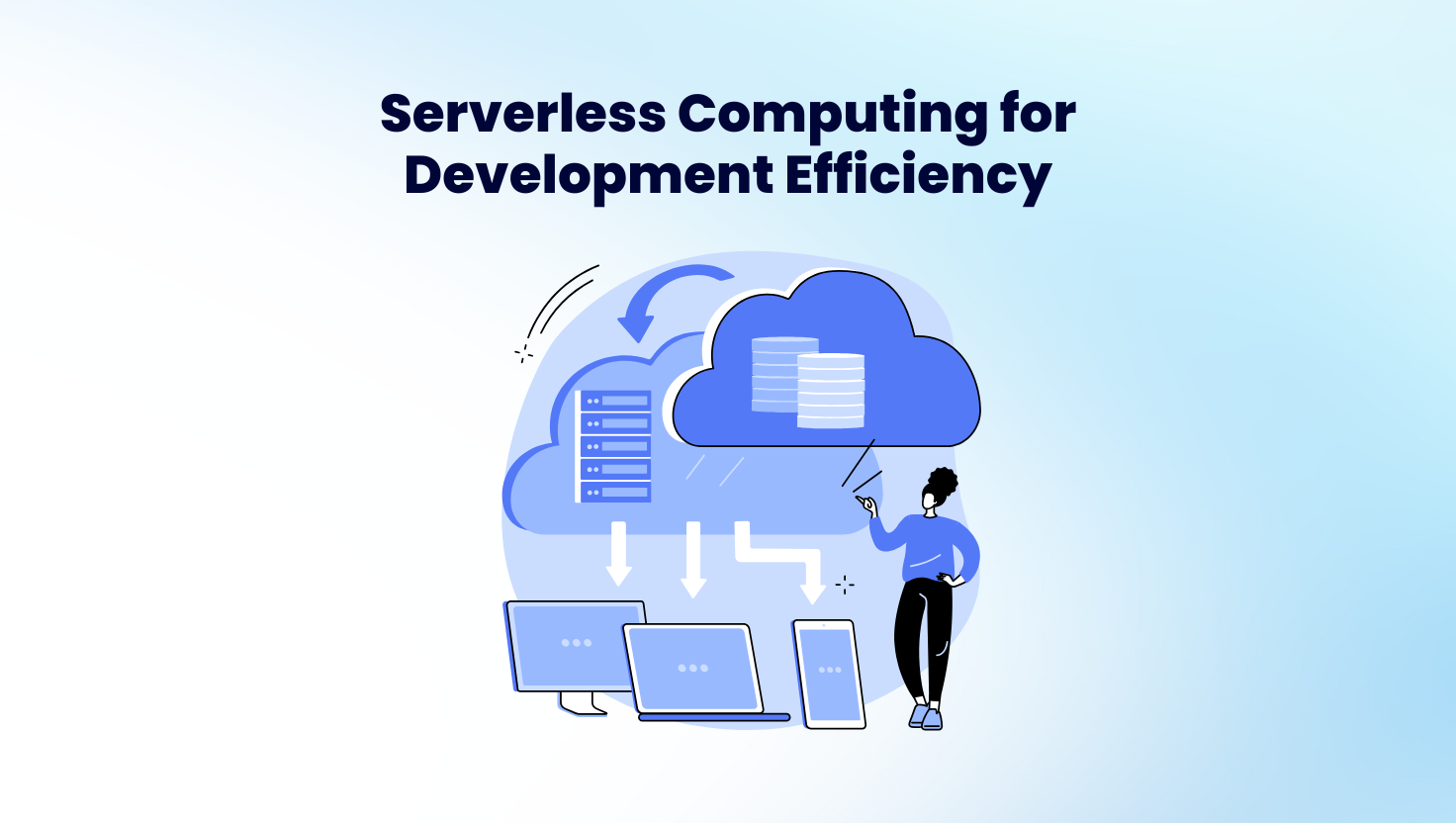
26 Feb How Serverless Computing Can Improve Development Efficiency
Technology is constantly evolving, and businesses are always looking for ways to streamline development processes and reduce operational costs. One of the most innovative solutions in cloud computing is serverless computing. This approach allows developers to focus on writing and deploying code without worrying about managing servers, leading to greater efficiency and faster development cycles.
This blog explores how serverless computing improves development efficiency, its key benefits, and how businesses can leverage this technology to optimize their workflows.
What is Serverless Computing?
Serverless computing is a cloud computing model where cloud providers automatically manage server resources and execution environments. Unlike traditional cloud infrastructure, where developers need to provision and maintain servers, serverless computing enables applications to run on demand, scaling automatically based on usage.
Some of the most popular serverless platforms include:
- AWS Lambda
- Google Cloud Functions
- Microsoft Azure Functions
- IBM Cloud Functions
With serverless computing, businesses only pay for the compute power they use, making it a cost-effective solution for modern application development.
How Serverless Computing Improves Development Efficiency
1. Eliminates Server Management Overhead
Traditional application development requires setting up, configuring, and maintaining servers. With serverless computing, developers do not need to manage infrastructure, freeing up valuable time to focus on writing code and improving applications.
- No need for manual server provisioning
- No maintenance of operating systems and patches
- No concerns about scaling infrastructure
2. Faster Development and Deployment
Serverless architectures support event-driven execution, meaning applications can be built and deployed quickly without worrying about infrastructure constraints. Developers can:
- Deploy code as individual functions
- Focus on building modular, reusable microservices
- Speed up release cycles using continuous integration and deployment (CI/CD)
3. Automatic Scalability
One of the biggest advantages of serverless computing is automatic scaling. Traditional servers often require manual scaling, which can lead to:
- Over-provisioning (wasted resources)
- Under-provisioning (downtime and slow performance)
Serverless computing eliminates these concerns by dynamically adjusting resources based on traffic and workload demand. Whether you receive 10 or 10,000 requests, your application scales seamlessly.
4. Cost Savings Through Pay-Per-Use Model
With serverless computing, businesses only pay for what they use. Instead of maintaining idle servers, computing resources are billed based on execution time. This is especially beneficial for applications with variable traffic patterns.
Key cost advantages of serverless computing:
- No expenses on idle infrastructure
- Lower operational costs for small startups and enterprises
- More predictable billing with event-based pricing
Better Resource Utilization
Since serverless platforms handle execution on shared infrastructure, they maximize resource utilization. Businesses can leverage efficient cloud resource allocation, reducing waste and improving energy efficiency.
Built-in Security and Maintenance
Cloud providers handle most security, compliance, and maintenance tasks for serverless applications. This means:
- Automatic patching and updates
- Secure execution environments
- Reduced risk of security vulnerabilities
By relying on managed services, businesses can minimize security risks while maintaining compliance with industry regulations.
Use Cases for Serverless Computing
1. Web and Mobile Backends
Serverless computing is perfect for handling backend logic for web and mobile applications. Developers can build:
- Authentication systems
- User management services
- Database interactions
2. Event-Driven Applications
Serverless functions execute in response to events, making them ideal for:
- Processing real-time data streams
- Running scheduled background tasks
- Handling notifications and alerts
3. Chatbots and Virtual Assistants
Businesses can use serverless functions to power AI-based chatbots and voice assistants. This enables:
- Instant responses to customer queries
- Low-cost execution for intermittent workloads
- Easy integration with messaging platforms
4. API Gateways and Microservices
Serverless architectures integrate well with API gateways, allowing businesses to:
- Deploy lightweight, scalable APIs
- Enable seamless third-party integrations
- Reduce infrastructure complexity
5. Data Processing and Analytics
Serverless computing allows efficient big data processing with services like AWS Lambda, Google Cloud Functions, and Azure Functions. Companies can:
- Process large datasets in parallel
- Automate log analysis and reporting
- Scale analytics workloads based on real-time needs
6. Challenges of Serverless Computing
Despite its advantages, serverless computing also presents some challenges:
- Cold Start Issues – Since functions are executed on demand, there may be slight delays in response times when a function is invoked after inactivity.
- Limited Execution Time – Serverless functions typically have a maximum execution duration (e.g., AWS Lambda limits execution to 15 minutes).
- Vendor Lock-in – Businesses relying on a specific cloud provider may face challenges migrating applications to other platforms.
To address these challenges, businesses should:
- Optimize function execution times
- Use provisioned concurrency to reduce cold starts
- Design applications using multi-cloud or hybrid cloud strategies
How PT. KDN Can Help with Serverless Development
At PT KDN, we specialize in serverless development to help businesses build scalable, cost-effective applications. Whether you need:
- Serverless API development
- Microservices architecture implementation
- Cloud function optimization


Sorry, the comment form is closed at this time.